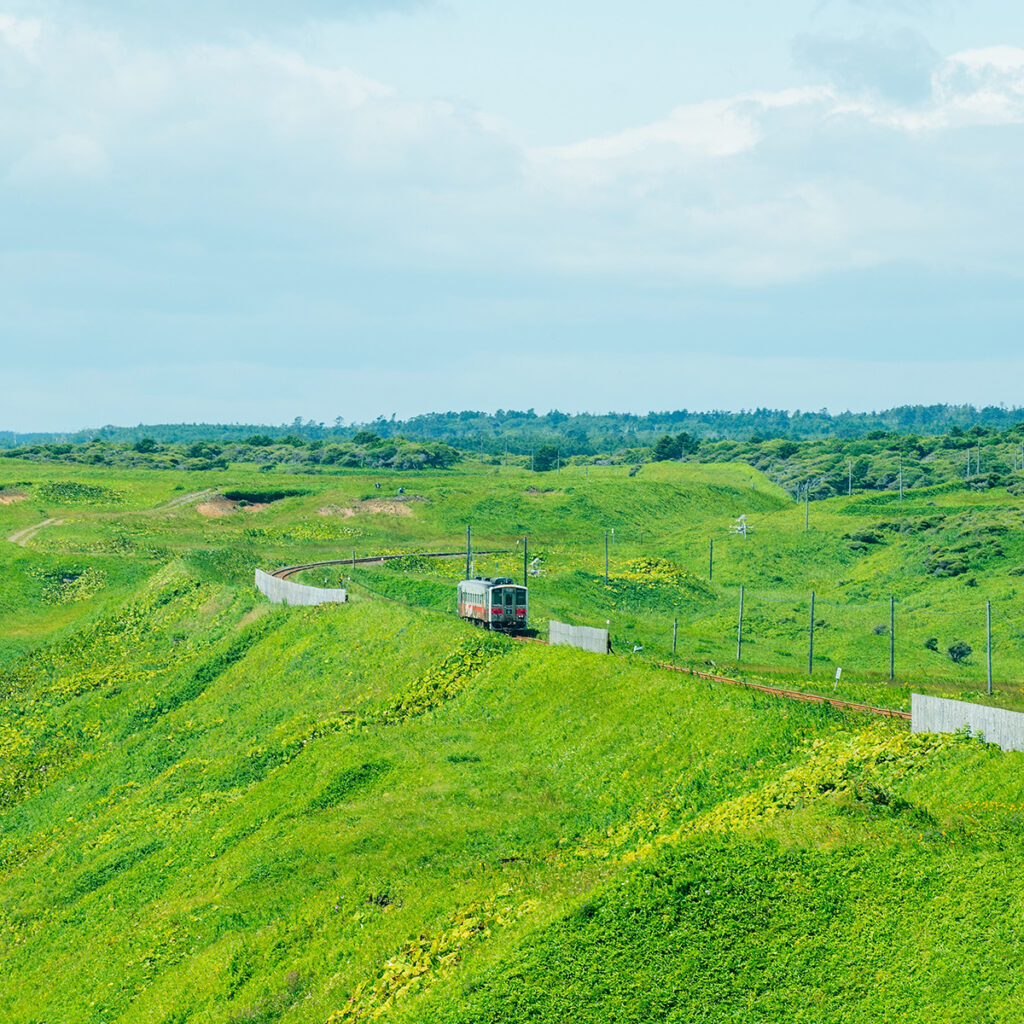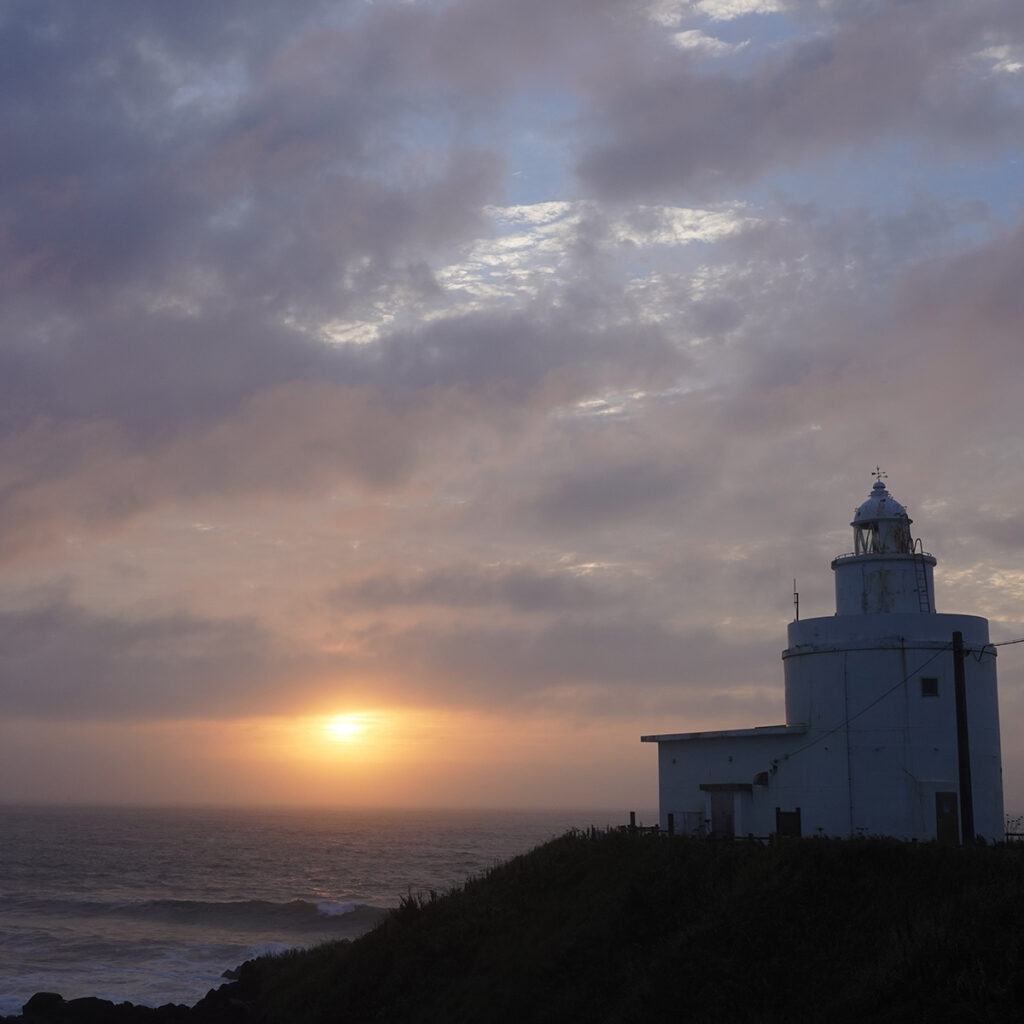
Things to Do
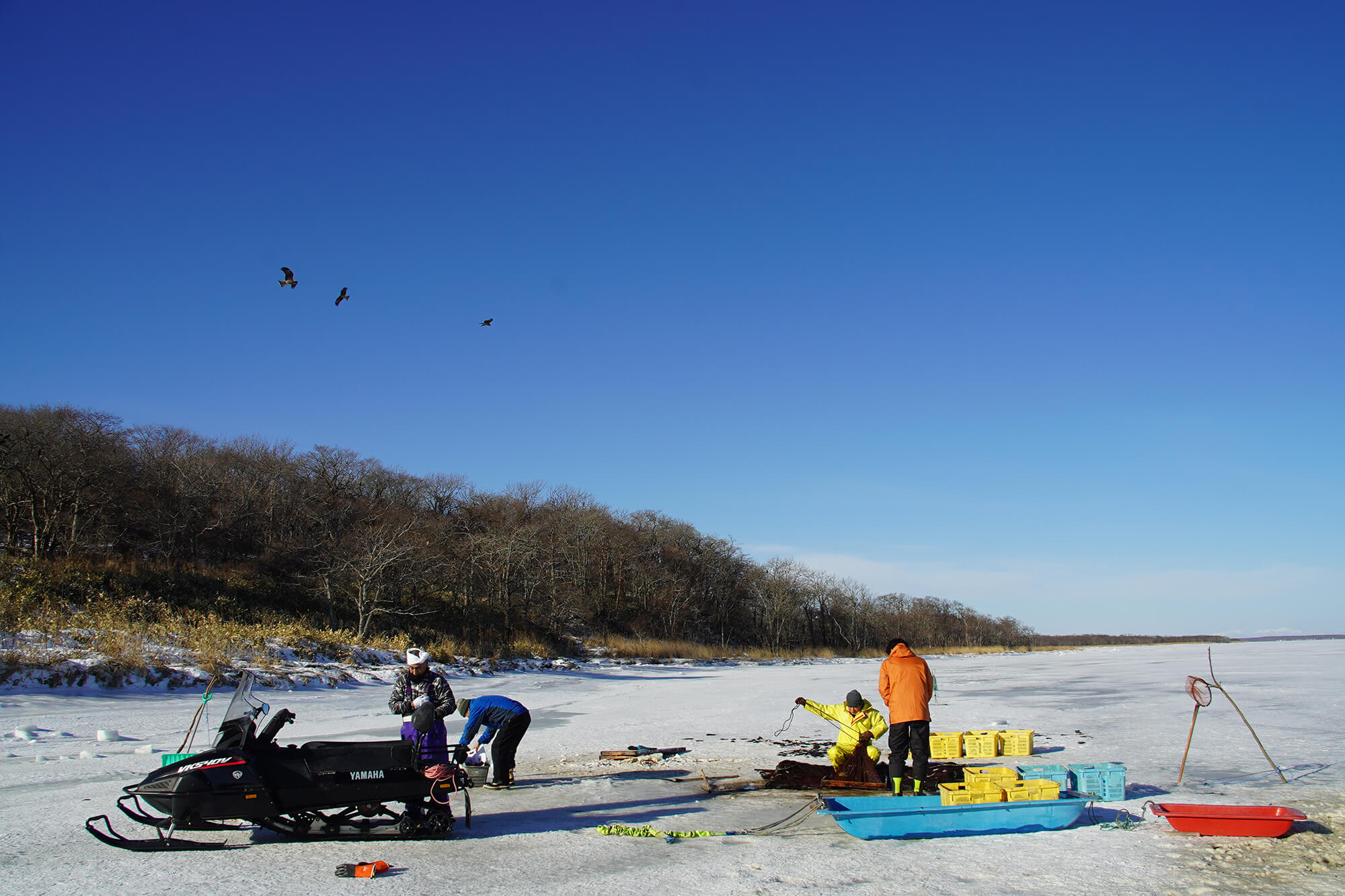
Fixed-net ice fishing: the work of fishers that continues through the depths of winter
Lake Furen stretches out across the base of the Nemuro Peninsula. In winter, fishers set up fixed-nets under the frozen surface of the lake to do a form of ice fishing with nets. At this time of the year, they can bring in Saffron cod and smelt. This activity also attracts numerous birds including eagles and black kites, who come in search for some tasty, leftover morsels. The sight of birds hovering above the fishers is a classic winter scene in Nemuro.
I joined fishers Junichi Komukai and Yoshimi Noto, along with Shigeo Arita from the Nemuro Tourism Association, for some fixed-net ice fishing. Read on to find out more about this winter activity conducted in frigid temperatures.
*The content of the article is information as of 2023.
A traditional fishing method conducted on the frozen lake that has continued for 100 years
The lake freezes from the end of December to early January. Fixed-net ice fishing begins by setting up the net. Here’s how! First, a rectangular hole is cut in the ice with a chainsaw, and then two more holes are cut on either side 20 meters away, according to the length of the net. This is followed by another two holes halfway between the new holes and the original hole. Next, the end of the net is attached to a pole that is then sunk through the rectangular hole. It’s then pushed towards the midpoint holes and finally towards the end holes. The end of the net is pulled out of the end holes and then secured to a wooden pole stuck in the ice to complete the trap.
From January to mid-February, the fishers haul in the nets they have set.
On a sunny day in mid-January, I joined the fishing party.
Walking on the ice, we made our way to the fishing location. There was a rectangular wooden board on the ice. Lifting it up revealed the water below, gently lapping against the ice—seeing that hit home that I was standing on top of a frozen lake.
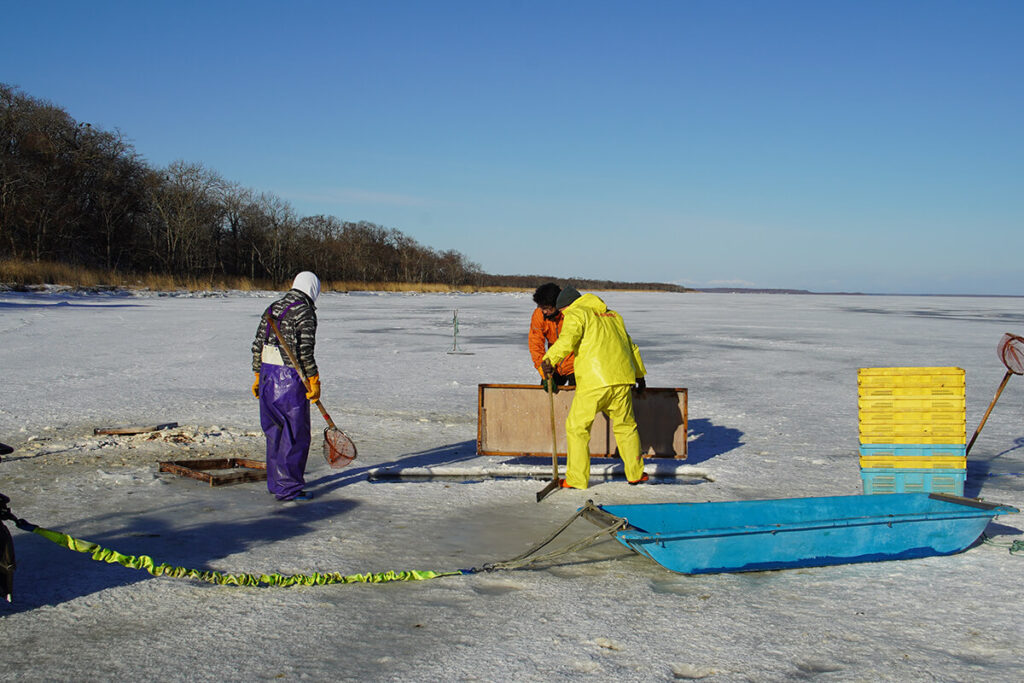
Mr. Komukai and Ms. Noto started pulling the net up after loosening the end of it from the wooden pole. To prevent the net from tipping, the fishers pulled it up straight in perfect unison.
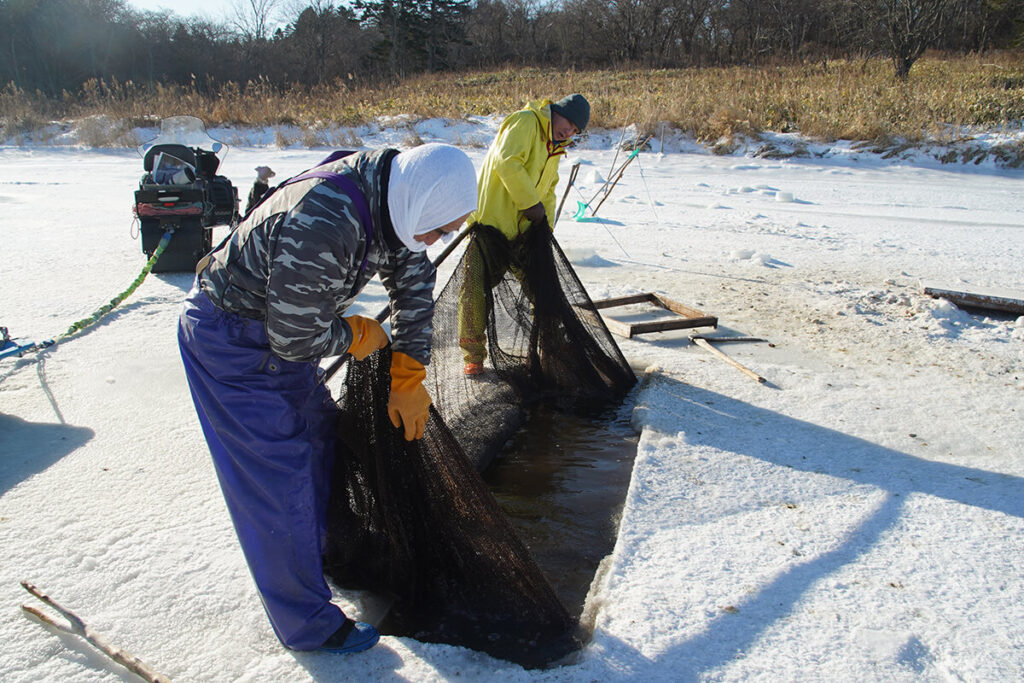
After some time, I started to see fish wriggling in the water. A wooden frame was used to secure the net. As I watched to see how they would pull up the fish, they began scooping the fish in the net with a tool that looked like an insect net. With a smooth rhythm, Mr. Komukai moved the fish to the crates. Fish of various shapes and sizes started to fill the crates.
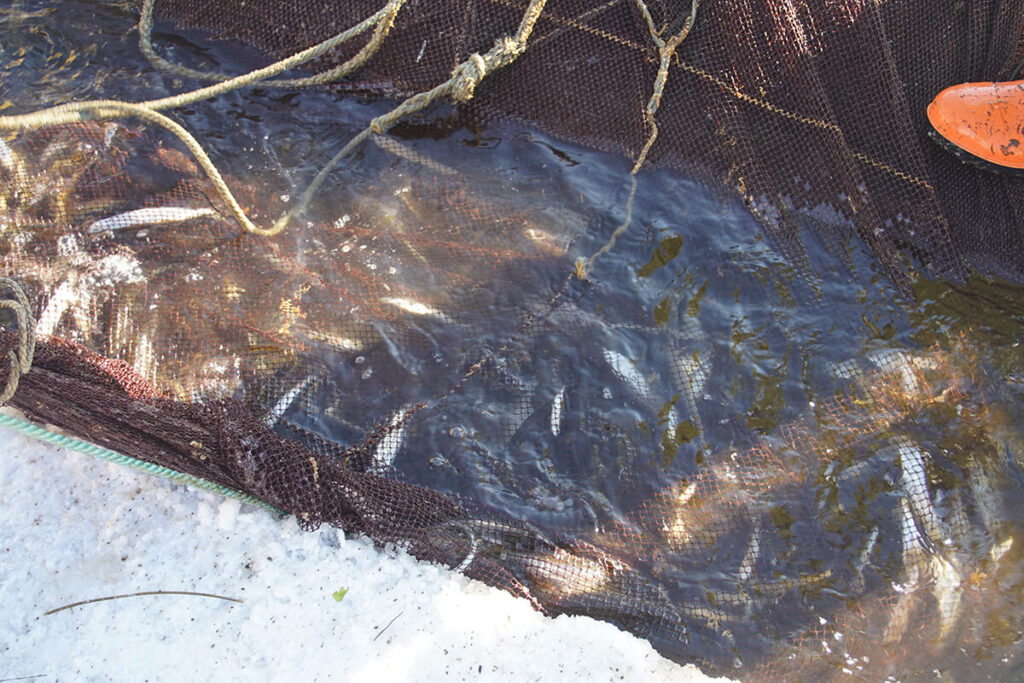
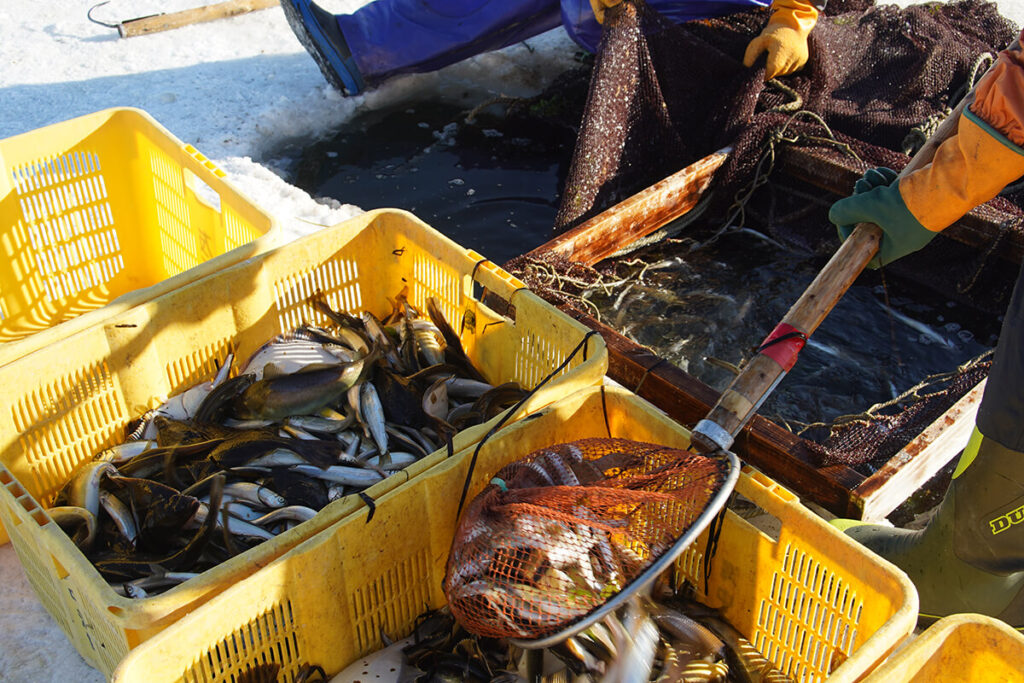
I got a chance to try my hand at scooping the fish. I had to stand with one foot on either side of the hole and bend at the hips to scoop up the fish. The fish were lighter than I expected, and I was able to move them quickly, but as I leaned forward and continued the up-and-down movement of scooping and moving the fish to the crates, my back and hips began to tire. It’s a simple task, but it seems to require a knack and physical strength.
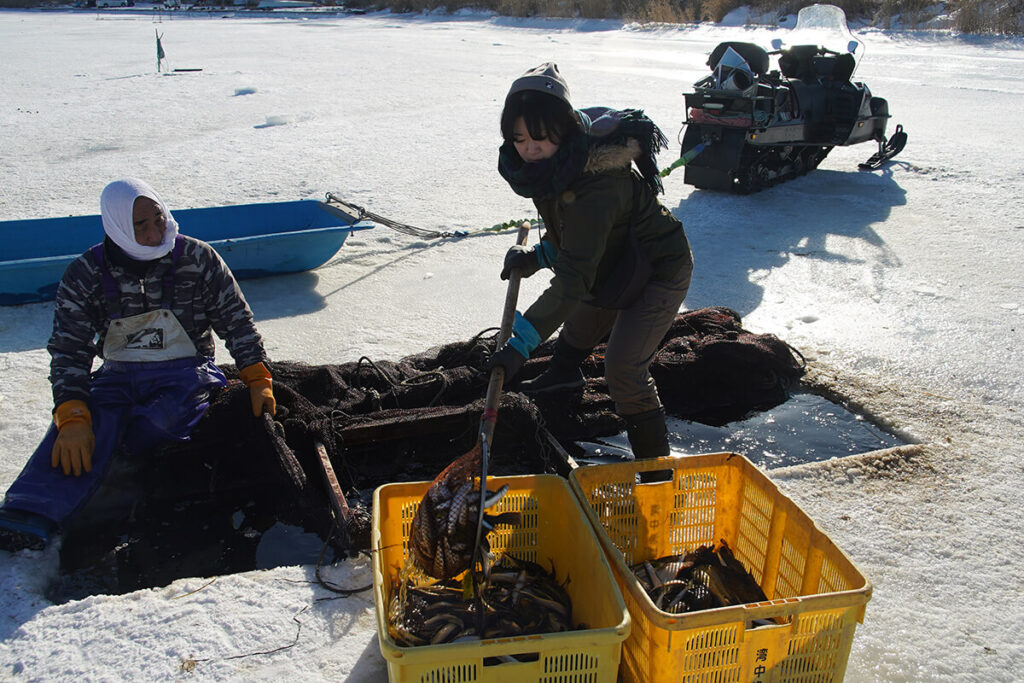
After about 10 minutes of scooping the fish, we had filled about five crates to the brim. “Today was a good catch!” said Mr. Komukai. After returning the net, we began pulling in the other side of the net, which had more fish in it.
The birds begging for unclaimed morsels
Once the crates are full, the fish are sorted. Only fish that can be sold at the market are kept. Fish like flounder, gunnel and Japanese sculpin are left on the lake’s surface.
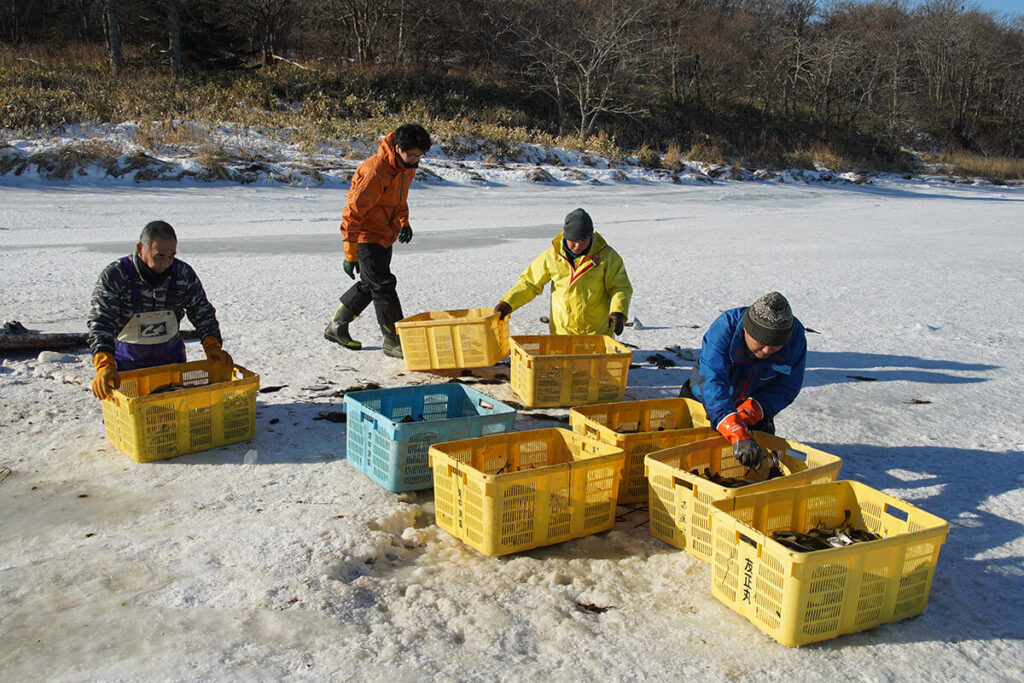
There are some fauna that rely on these unclaimed fish—the wild birds that live at Lake Furen. Countless birds that had been waiting in the trees along the shore gathered at once when the fish were spread out.
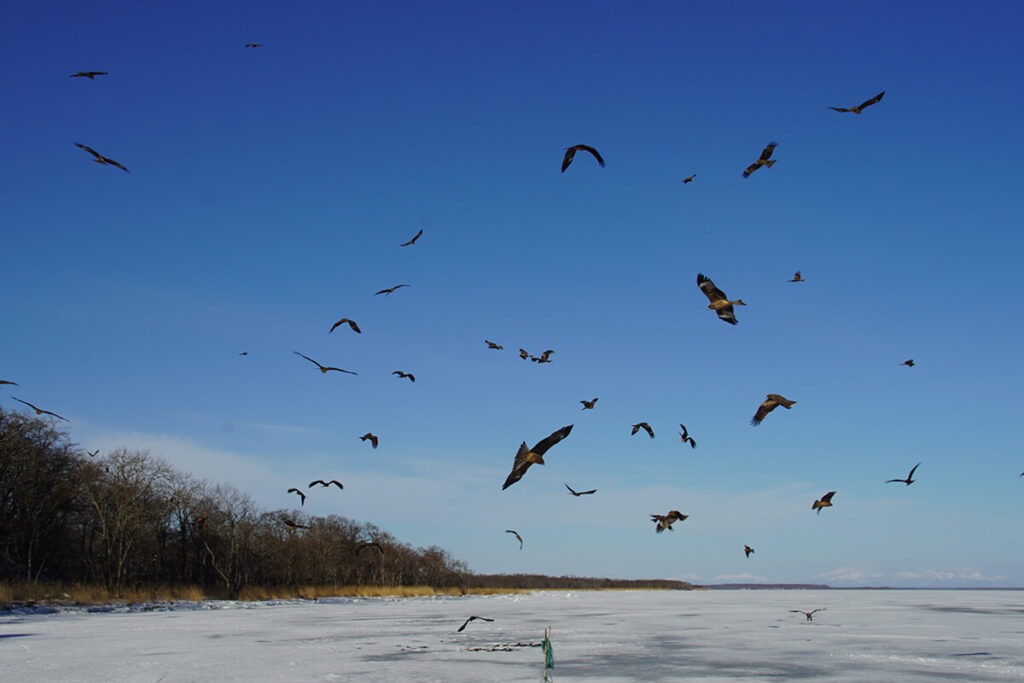
The first birds to arrive were those accustomed to people, including crows and black kites. After a while, a white-tailed eagle arrived, flapping its large wings, and snatched up some fish, blending in with the black kites. I noticed over 50 birds soaring in the sky and competing for the fish. The fish left on the ice by the fixed-net ice fishers are a valuable food source for these birds. They feast on the spoils of the fishing season and accumulate enough nutrients to last through the winter.
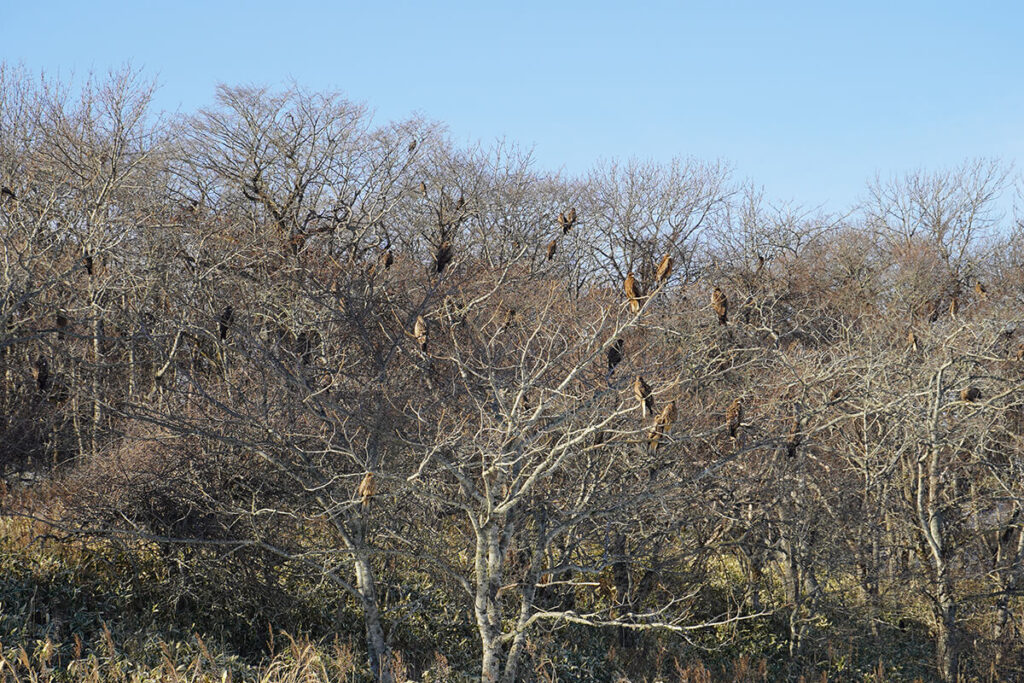
▶Black kites keeping watch from the trees.
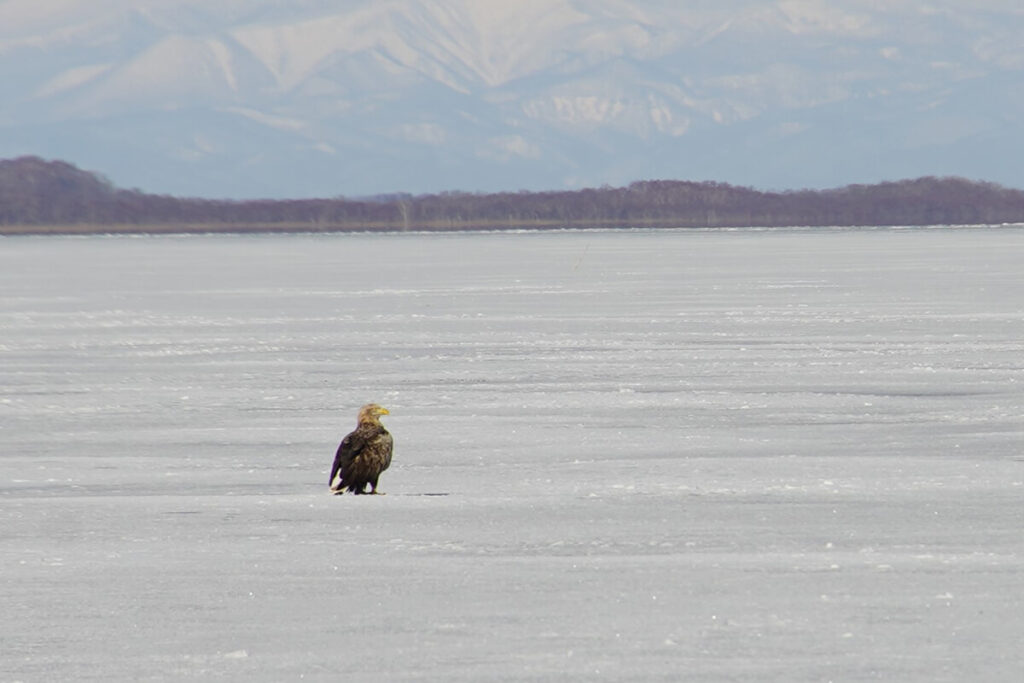
▶According to Mr. Arita, about 30% of Hokkaido’s Steller’s sea eagle and white-tailed eagle populations spend the winter here at Lake Furen.
Passing on work that connects nature and people
These days there are about 10 groups of fishers who are conducting fixed-net ice fishing on Lake Furen, but the population is aging and more people are quitting. Setting up and hauling the nets is very labor-intensive for one person to do. I’m told that many people are quitting for physical reasons.
To address this, Mr. Komukai has been working to promote fixed-net ice fishing through an owner system and hands-on tours. The project began when Ms. Noto approached Mr. Komukai, who had been working as a nature guide for some time. On the tour, participants can try their hand at part of the fishing process, grill and eat the fish they catch, and take some home, allowing them to experience traditional fishing while having fun.
“I try to let people see the process as it is,” explains Mr. Komukai. “In the beginning, I used to talk a lot, but the more I explained, the less time there was for fishing. I want my guests to see what we’re doing all the time and enjoy it.”
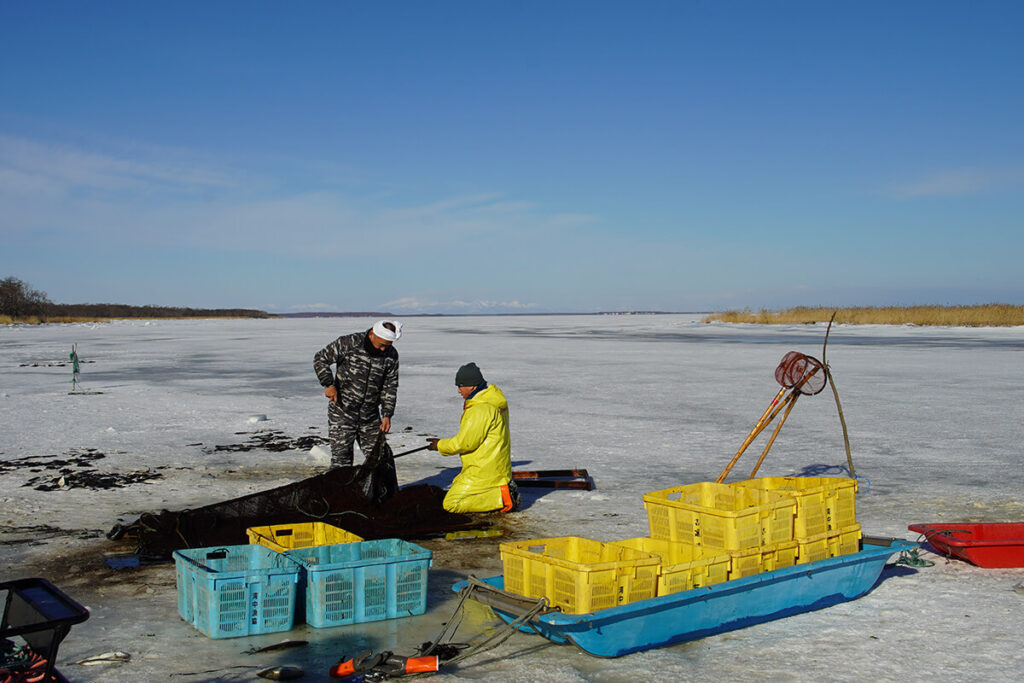
Fixed-net ice fishing has been one of the fishers’ winter jobs for many years. After experiencing this, I hope that this scene where nature and people intertwine will be passed down to future generations.
【MEMO】
Fixed-net ice fishing tour and net hauling experience
Tour operator: Junichi Komukai
Phone: 080-1973-5622
Experience fee: From 10,000 yen
Related Articles
#esukaroppu #localfood
#hanasakiline #charmsofnemuro




